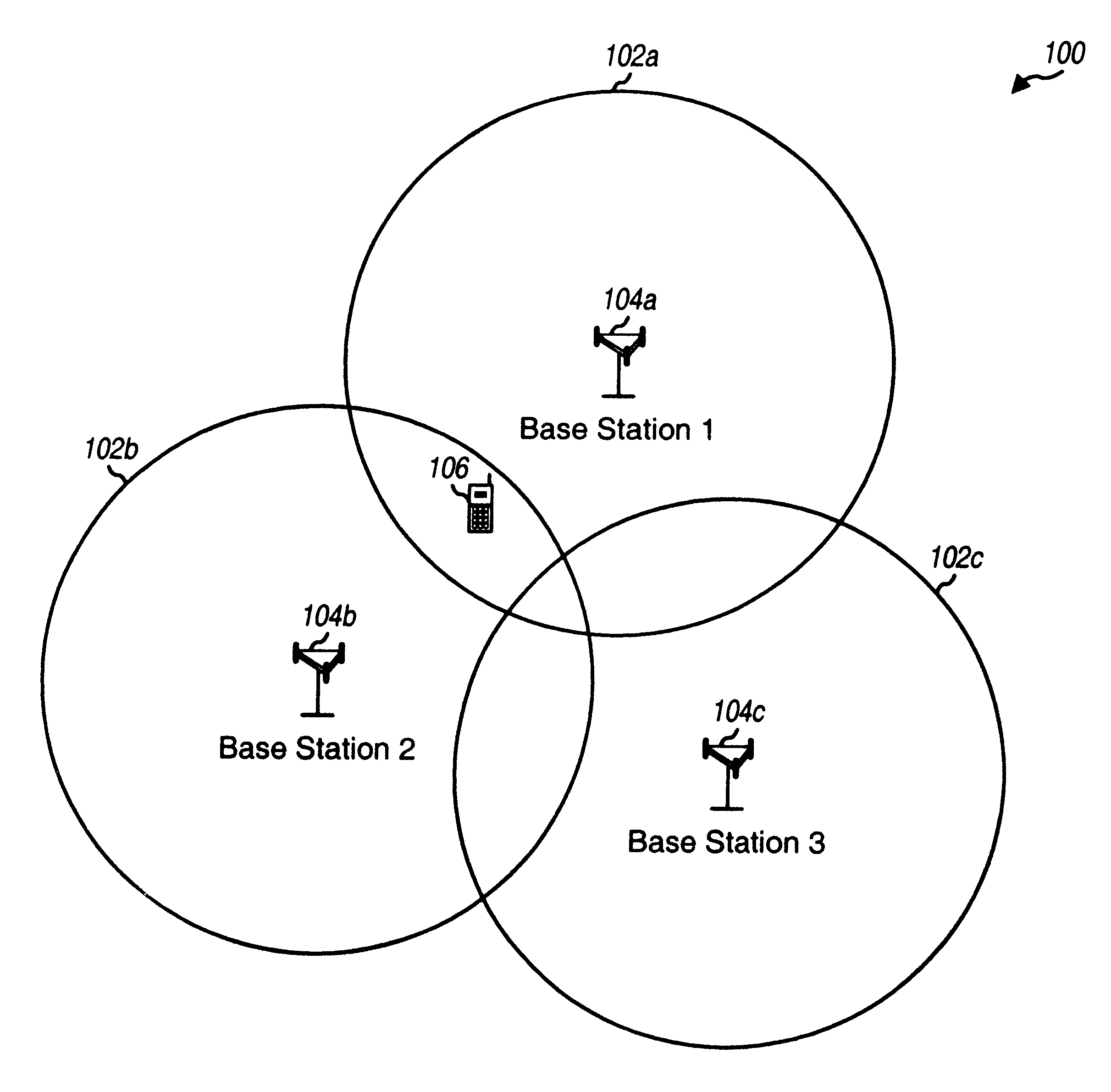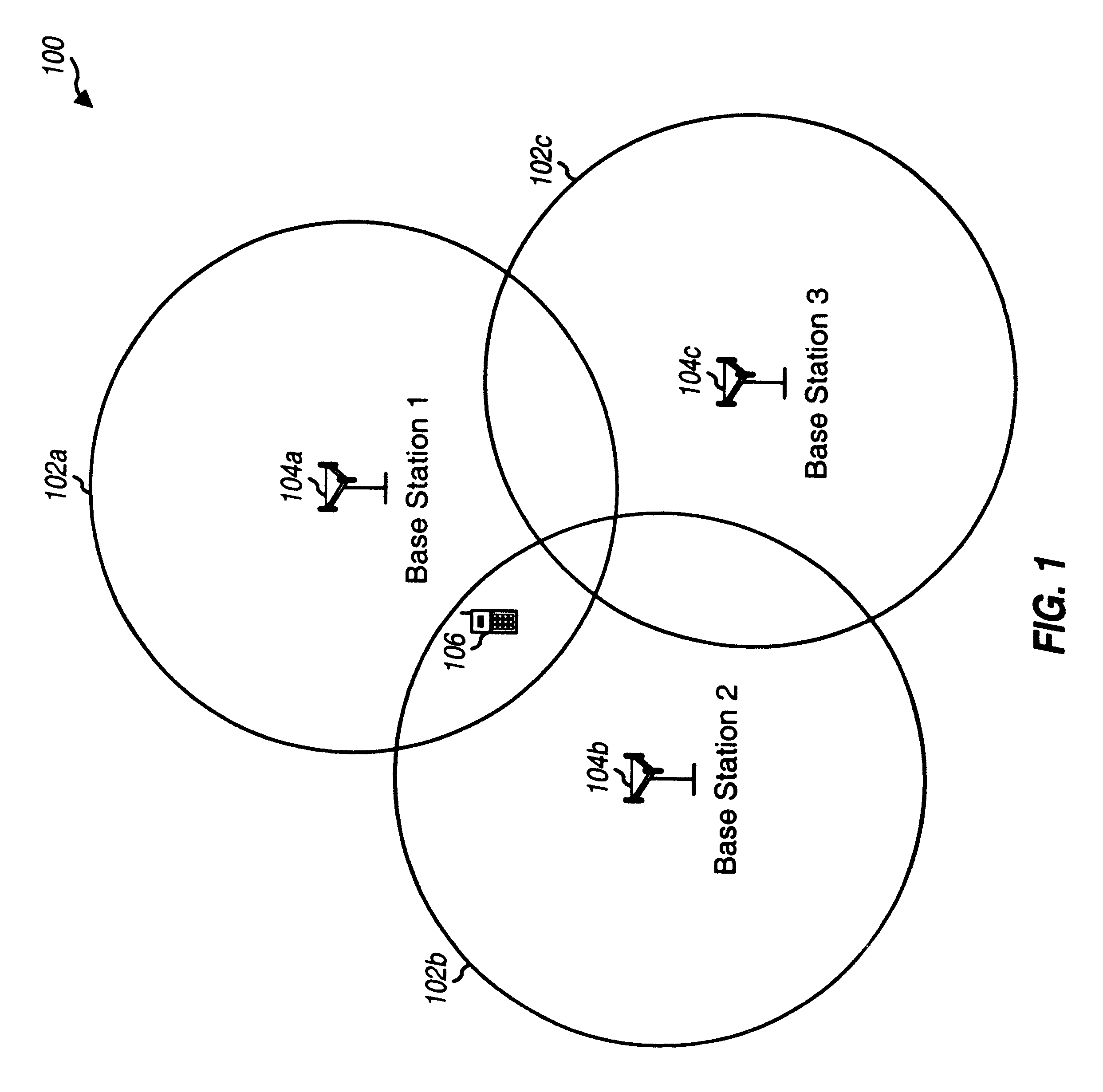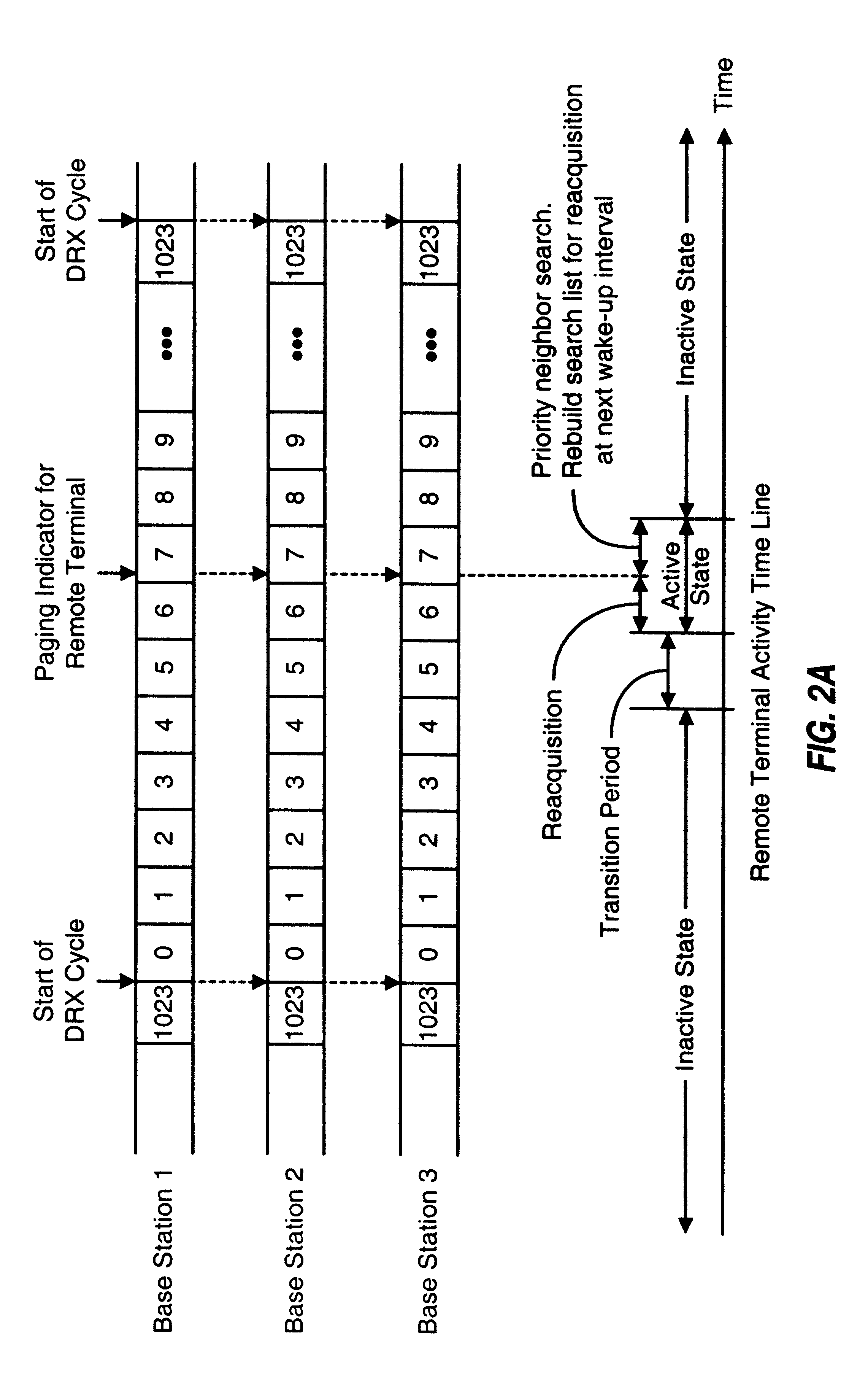Method and apparatus for performing idle mode reacquisition and handoff in an asynchronous communication system
a communication system and idle mode technology, applied in the field of communication, can solve the problems of reducing the available battery resources, cellular telephones remain idle for significant periods of time, and remote terminals continue to consume power
- Summary
- Abstract
- Description
- Claims
- Application Information
AI Technical Summary
Benefits of technology
Problems solved by technology
Method used
Image
Examples
Embodiment Construction
FIG. 1 is a diagram of a wireless communication system 100 that includes a number of base stations and supports a number of users. System 100 includes a number of base stations 104 (only three base stations are shown in FIG. 1 for simplicity), with each base station serving a particular coverage area 102. The base station and its coverage area are often collectively referred to as a cell.
A number of remote terminals 106 are typically dispersed throughout the system (only one terminal is shown in FIG. 1 for simplicity). Each remote terminal 106 may communicate with one or more base stations on the forward and reverse links at any moment in the active mode, depending on whether the remote terminal is in soft handoff. In the idle mode, a remote terminal typically only communicates with one base station at a time.
In the example shown in FIG. 1, base station 1 is the preferred base station (which is also often referred to as the serving cell) for remote terminal 106, and base stations 2 ...
PUM
 Login to View More
Login to View More Abstract
Description
Claims
Application Information
 Login to View More
Login to View More - R&D
- Intellectual Property
- Life Sciences
- Materials
- Tech Scout
- Unparalleled Data Quality
- Higher Quality Content
- 60% Fewer Hallucinations
Browse by: Latest US Patents, China's latest patents, Technical Efficacy Thesaurus, Application Domain, Technology Topic, Popular Technical Reports.
© 2025 PatSnap. All rights reserved.Legal|Privacy policy|Modern Slavery Act Transparency Statement|Sitemap|About US| Contact US: help@patsnap.com



